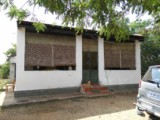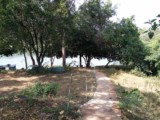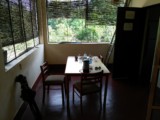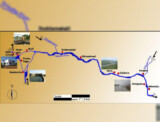WASI Membership
Membership of WASI is open to nature lovers and responsible angling enthusiasts. To understand the conditions and joining process, please go through the attached membership form. You may also contact the office for further clarifications. * Please note that all memberships need to be proposed and seconded by existing WASI members and includes a lifetime membership fee.
Activities at WASI
- Research Activities and field trips to support our conservation measures.
- Publishing of scientific papers and data pertaining to Mahseer conservation
- Training & Education for enforcement agencies and collaborating organizations.
- Awareness programmes and content development for fish conservation
- Angling, Cottage Stay and Camping along our lease areas
- Nature Immersion and outdoor activities
- Anti-poaching activities with our guards
LEASE AREAS AND COTTAGES
WASI protects 3 stretches of the Cauvery river, which are leased to it from the fisheries department. All 3 stretches are currently around the Shivanasamudram area near Malavalli.
RESEARCH & CONSERVATION
WASI currently has research permits from various Forest Departments, to carry out Mahseer focused research on the Cauvery river. In particular, we are collaborating with key government agencies and scientific institutions to establish a long term Conservation Action Plan to rehabilitate the “Cauvery Mahseer”. We have undertaken significant field work for gathering baseline data establish the current status, taxonomy, relative densities, habitat specificity and conservation challenges followed by recommendations for rehabilitation, recruitment and habitat management. We have conducted over 50 field trips by 40 trained volunteers and gathered valuable genetic and morphological data, which is currently being analyzed by a central government agency. We are also developing new techniques to quantify mahseer specific habitat variables in the CWS.
OUR CATCH AND RELEASE PROGRAMME
Most non-anglers do not make an intuitive connection between angling and conservation. Indeed, they express surprise when first introduced to the term “catch and release”. As the term suggests, this is a process whereby the fish is caught, brought to the surface and then released immediately. Either within the water or after a quick process of taking a photograph, measuring and releasing it within strict guidelines to minimize stress to the fish. There are now plenty of studies that measure the effects of catch and release angling and it has been found that robust species such as Mahseer suffer low side effects and indicate very high survival rates. (link to study by Shannon Bower Et al.) Also, species such as the Mahseer have a bony lip and our members are required to use barbless hooks that release quickly from the fish. With good fish handling practices, anglers can now enjoy their angling and also treasure the moment when the fish with one big swing of its tail, slips out of the support provided by the anglers wet palms.
Recreational “catch and release” angling can serve as a valuable conservation tool as anglers are constantly monitoring both the health and morphology of the fish as well as the ecosystem that it thrives in. More importantly, revenue generated from angling can be ploughed back into conservation and forms a source of revenue for local communities, who can then be co-opted into conservation efforts. Harmful poaching methods such as gill netting, poisoning and dynamiting can be curtailed. The net effect on the species has been found to be highly beneficial. This model was pioneered in India by organizations such as WASI and the survival of the Mahseer in large stretches of the Cauvery River, despite severe anthropogenic pressures, is proof that the model works effectively. This model is now being replicated in various states and many of their watchers and ghillies have been professionally trained by WASI







